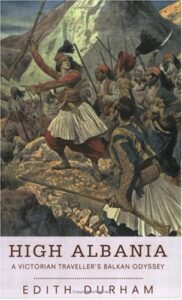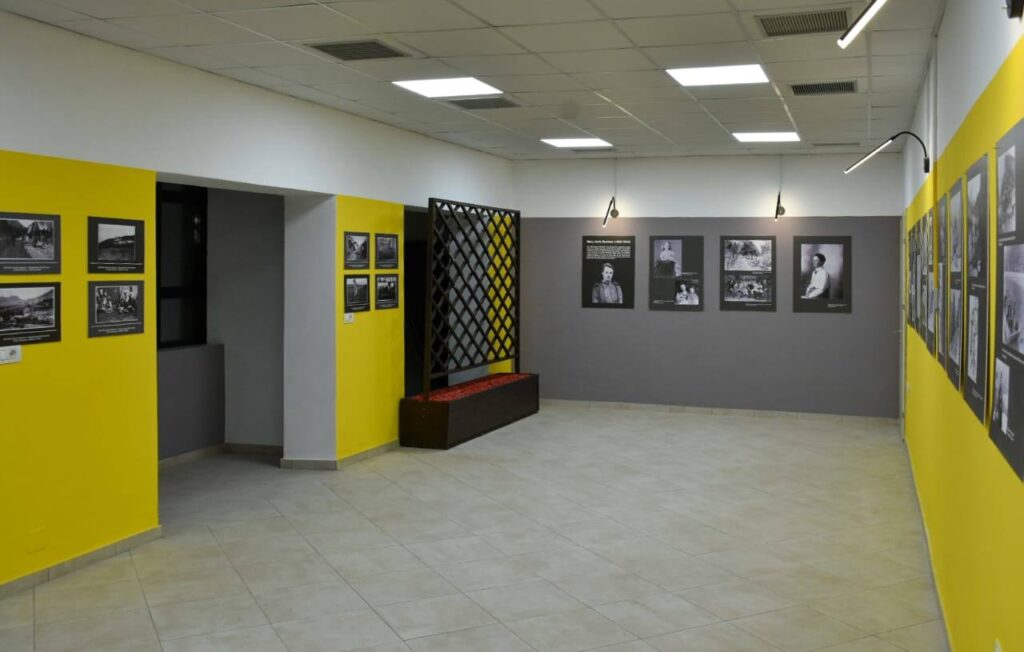What Edith Durham wrote about Albanians
“Descendants of the first Aryans of the Aryans and of the Illyrians, Thracians or Epirotes of classical times, the Albanians are the oldest race in Southeastern Europe.
The same well-defined division, which once divided the country between the kingdoms of Illyria and Molossia, can be found today at the Shkumbin River (the Via Egnatia, the great Roman artery between East and West), separating the two main parts of the population. But, despite their differences in religion, dialect, and social institutions, the Albanians have always maintained a race – as a peculiarity of national consciousness and have clearly distinguished themselves from the other races of the Balkan Peninsula”. “About 600 BC, they were conquered and perhaps extensively influenced by the Celts, from the north.
From this Celto-Illyrian stock, the modern Albanian descends. Thus, he is the oldest inhabitant of the Balkan Peninsula, and the fact that he has survived the successive conquests and rule of the Romans, Bulgarians, Serbs, and Turks and has remained Albanian sufficiently testifies to his national solid feeling. No conqueror has succeeded in subduing him.”
He is usually a skillful artisan and works industrially. Almost the entire production of the beautiful gold embroidery of the Balkans is Albanian work. The magnificent costume of the Court of Montenegro was the creation of Albanian tailors. Most of the goldsmiths of the Balkans, too, are Albanians or of Albanian descent. Strangely enough—as Miss Durham says—most of the artistic formations they still made resemble the ornaments found in prehistoric tombs, so skill and ornamentation seem to have been inherited from the ancient Illyrians. She then claims that the Albanian’s domestic cleanliness can be an example for many others.
– “Churches and mosques can be found together in the largest cities. Since the Turks had conquered Albania at the end of the 15th century, the Albanians sought help from Christian Europe, especially Venice, for years. No one came, and in the 18th century, Islam began to spread in Albania as in other Balkan lands. But the Albanians put race before religion, and Christians and Muslims joined forces to fight the Turks for independence. Nor is the Albanian Muslim fanatical”. ….
“Since the Christian Albanians of the south belong to the Orthodox Church, a Greek bishop here once even excommunicated the Albanian language, and the priests said that it was useless to pray in Albanian since Christ did not understand it. On the other hand, the Turks sentenced anyone who lectured or published in the forbidden Albanian language to fifteen years in prison. “But the steadfast Albanian published his books abroad and smuggled them in with difficulty and danger.
The Albanian learned and remained Albanian. When he had the opportunity, he completed his studies in Vienna or Paris. Many students were educated at Robert College by Americans.”
I assure you that they are Bismarcks – real Bismarcks. One day, they will demand, and Europe will have to give them what they require! When I passed through Rumelia, I asked people: “What are you?” – Catholic – one answered. – Protestant – the other answered. In Bulgaria, I asked: “What are you?” – Orthodox. In Serbia, I asked: “What are you?” – Protestant. – Orthodox…. Thus, the idiotic dogmas of people completely drowned me, and entering Albania, I asked: “What are you here?” – Albanians – answered me clearly and firmly. “Finally,” I said, “I was freed here from fanatics and god-creators.” (the Burdens of the Balkans 1905)


About
Mary Edith Durham (8 December 1863 – 15 November 1944) was a British artist, anthropologist, and writer best known for her anthropological accounts of life in Albania in the early 20th century. Her advocacy for the Albanian cause and her Albanophilia gained her the devotion of many Albanians who consider her a national heroine. On 15 November 2024, on the 80th anniversary of her death, the Albanians remembered her contributions in many activities in Tirana, Permet, and Shkodra.

Other News to Read
The Art of Expressing Love Beyond Valentine’s Day
In our modern society, where digital connections often supersede physical presence, the art of expressing love faces new…
February in Tirana: A Month of Culture and Love
February in Tirana: A Month of Culture and Love. Come and explore with us this beautiful season in…
The Deeper Roots of Multilingualism
Tirana’s youth are linguistic alchemists, transforming words into bridges of understanding
Coffee for Albanians is a way of living
Do you know that Tirana is the second city in the world with the highest coffee bars per…